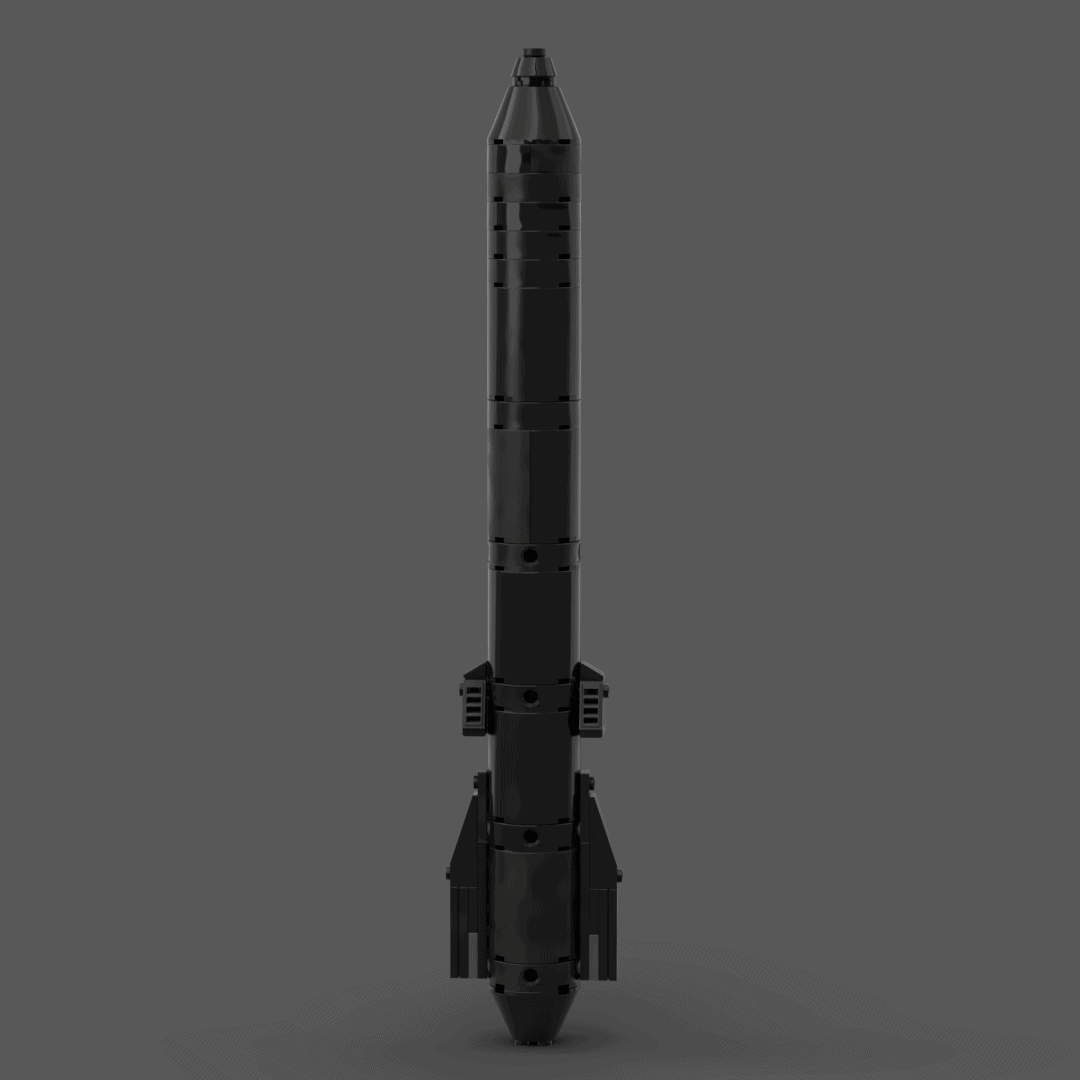
LEGO Designer:
Allan Jordan (Drscoop)
Sebastian Schön (MoppeW40k)
Designed: January 2020
Categories:
Payloads,
All,
Space Agency - Roscosmos
The Polyus had a total length of almost 37m and a diameter of up to 4.1m, It weighed about 80 tons and consisted of two main compartments: a smaller one, a functional service unit (FSB) and a larger one, a target module (CM).
The FSB used the long-established design of Salyut and this was only slightly modified to create a 20-ton craft, which was almost the same as the supply transport ships Kosmos-929, Kosmos-1267, Kosmos-1443, Kosmos-1668 and modules of the station Mir. It housed motion control systems and an onboard complex, telemetry control, command radio communications, thermal control, power supply, separation and discharge of fairings, antenna devices, and a control system for scientific experiments.
All devices and systems that could not withstand a vacuum, were located in a sealed instrument and cargo compartment (PGO). The propulsion compartment (ODE) housed four propulsion engines, 20 attitude and stabilization engines, and 16 precision stabilization engines, as well as tanks, pipelines and valves of the pneumatic hydraulic system serving the engines. On the lateral surfaces of the ODE, there were solar batteries that unfold after entering orbit.
A lot of work was done to create a new large head fairing that protected the FSB from the incoming air flow. For the first time, it was made from a non-metallic material – carbon fiber.
The target module was designed and manufactured from scratch. At the same time, the designers focused on the maximum use of the already mastered units and technologies. For example, the diameter and design of all compartments made it possible to use the existing technological equipment at the plant. The nodes connecting the launch vehicle with the spacecraft were already made – the same as for the Buran, as well as the transitional docking block connecting the Polyus with the Earth at launch. The system for separating the Polyus from the rocket also was similar to the Buran.
Since the FSB was essentially a previously mastered spacecraft, it had to comply with the loads for which it was calculated when launched on the Proton launch vehicle. Therefore, of all the configuration options available, they were able to choose only one in which the FSB is located at the head of the Polyus. And since the propulsion system, which was in the FSB, was unprofitable to transfer to the aft part, after separation from the launch vehicle, the Polyus would need to turn 180 degrees.
Designer Notes
The Core booster for the Energia, Energia-M, Polyus and Buran models should have flexi tubing along the core stage but Stud.IO and LDD would not let me add these. A pearl dark grey 75c23 and 75c32 should work, but might require trimming. These should be flexible enough to work. Or search the web for “Lego compatible pneumatic hose” and similar tubing can be bought by the metre – the outside diameter is a little different so the attachment point on the nosecone might require some modification? Similarly, the vertical pipes on the side boosters are 3mm hosing, but can, I understand, be replaced with 3mm PVC rods obtainable from various hobby or craft stores…
Credits
This has evolved significantly from my old v3 Energia Buran system. Significant thanks and credit are due to the following:
- Sunder59 for the original Energia-Polyus outline design.
- KingsKnight/Andrew Harkins for the US 1:110 shuttle design that influenced the Buran design and the Energia Core tank nosecone design.
- David Welling for significant improvements to the Side Boosters for stability, and Florent Todeschini for the inspiration for the upgraded nosecones.
- Sebastian Schoen for the Polyus model, the Buran-T nosecone design and for the inspiration to re-design the core section from a 6×6 stud core to a more accurate 5×5 stud core.
Part count: 64 bricks, 24 lots.
| Unit | width | length | height |
|---|---|---|---|
| Studs | 4.0 | 7.6 | 42.6 |
| Centimetres | 3.2 | 6.1 | 34.1 |
| Inches | 1.3 | 2.4 | 13.4 |
Downloads
Pay what you feel
This digital model is provided free of charge. However, if you like it, and you would like to thank the designer for their time, please consider a donation of your choice. 100% of your donation will go directly to the designer.
Donations can be made by following this link:
Further Information and References
Designer Notes
Part count: bricks, lots.
| Unit | width | length | height |
|---|---|---|---|
| Studs | |||
| Inches | |||
| Centimetres |
Related Posts
None found